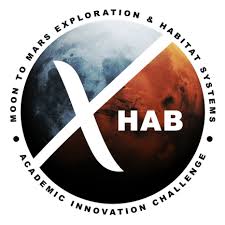X-Hab 2025 NASA Proposal
This is a stub. You can help by expanding it.
Overview

In early 2024, NASA released a request for proposals addressing the construction of a permanent lunar base. Dr. Orion Lawlor led the Aurora Robotics Team's proposal in response to Appendix B of the NASA RFP document, sponsored by NASA's Autonomous Robotic Construction Projects - TLT, PASS, ARMADAS. The proposal outlines the development of a modular robot capable of autonomous construction on the lunar surface.
Project Vision and Mission
- Vision: Transform the solar system using robotic construction with local materials.
- Mission: Design construction robots capable of autonomously building Artemis Base Camp structures using locally sourced regolith.
Concept of Operations
A single robot design uses multiple tools to excavate regolith, compact foundations, and place construction modules. This project will prototype the robot's design and operations using simulations and physical demonstrations.
Approach
The project employs a multi-phase approach, including:
- System-level Simulation: Using game engines like Godot to simulate regolith terrain and predict mechanical loads.
- Component Testing: Vacuum chamber and outdoor Alaska tests to validate component performance.
- Earth Analog Testing: Full-scale robot demonstrations in physical environments.
Key Questions
- What body plans allow a robot to perform both horizontal and vertical construction?
- What module shapes are best for robotic assembly using local materials?
Alignment with NASA Objectives
The proposal aligns with NASA's Moon-to-Mars Architecture by:
- Demonstrating autonomous construction capabilities.
- Scaling ISRU (In-Situ Resource Utilization) for lunar operations.
- Supporting a mix of autonomous and teleoperated robotic operations.
Project Phases
- Design: Requirements and system design during Fall 2024.
- Prototype: Build and component testing in Spring 2025.
- Integration: System-level breadboard tests to achieve a Technology Readiness Level of 4-5.
Budget
Total funding requested: $14,580.
Funding covers undergraduate student labor and project development costs.
Team
- Project Lead: Dr. Orion Lawlor
- Team Members: Andrew Mattson (CS BS/MS), Elliot Madsen (ME BS), Delano Horner (ME BS), Daniel Schliesing (ME BS), Kory Lamme (ME BS)
- Construction Expert: Dr. Nima Farzadnia
Educational Integration
The project will be integrated into UAF's computer science curriculum as a special topics course in Fall 2024 and as a systems design seminar in Spring 2025.
Additional Information
For more details, please contact Dr. Orion Lawlor at oslawlor@alaska.edu.
